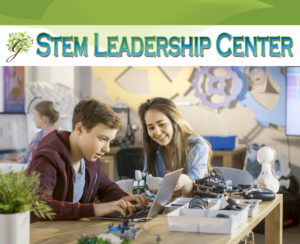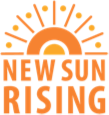
What does a room full of 4th graders using Wikipedia have in common with a room full of college students in a classroom shouting out conflicting information from their e-devices?
I am working with fourth graders at Baden Academy as we develop together a year-long new curriculum that integrates their science curriculum, but also seeps into their English, math and social studies. It is called Virtual Worlds. Our mission, to work in a small groups to create a virtual world that is mashed together with snippets of reality: it resides in a constellation visible from Earth, circling a star in the Bright Star Catalog, metaphorically shares qualities from several of the planets in our solar system, with weather systems, several species (with complete life cycles and family groups) that thrive (and grow endangered) in various ecosystems, and a narrative of one family’s efforts to survive for a year on the virtual world.
In the early throws of the project, we learned of the universe, its billions of galaxies and our own special Milky Way. We learned of our billions of stars in our galaxy and the patterns they form in the night sky from earth. We learned that our own star, the sun “Sol,” is a yellow dwarf and they accessed Wikipedia to look up their star. As I described how to find the spectral type of their star (so they know what color to make it in their animations), I asked the group, “Is Wikipedia a valid source for information?” They learn young! “No!” they chorused. I mentioned that Wikipedia is edited by hundreds of thousands of volunteers and much of the information comes from accepted and valid sources. I mentioned the Yale Bright Star Catalog, a list of research into the 9,110 stars visible to the naked eye, is one of the sources for information on their star’s Wikipedia page. So the right side of their star page with information from the Bright Star Catalog had information we were trusting, and the left side of the page had information we needed to verify if we wanted to use it. Oooh, the tangled web. That’s a lot for a 4th grade brain. And when they get to a college classroom, they will need to go further and take even the information on the right side, check it in the Yale Catalog and look to two outside sources to verify it. If they were in my college classroom, and they discover the information on Wikipedia is wrong, they will log in and change it on Wikipedia.
Why not just give them the answer? In the 21st century, it is more important for students to learn how to sift through information and determine truth than it is to memorize information and trust an authoritative source. That doesn’t fit with most standardized test questions, but it does fit with the conceptual, creative, and fluid lives they are already living in our 21st century world. When not in a classroom, they follow the social norm to access Wikipedia (one of the top ten accessed sites globally), and they do not look further.
The next day I was in a classroom of college students studying Global and Cultural Perspectives. I invite students to bring their e-devices to class (this year they all have them). Good class discussions (I am still learning to construct these well) include a collaborative information gathering. We compare scholarly sources (encyclopedias, anthologies, books, and articles that our college library gives us electronic access to), alongside popular sources (Wikipedia, sponsored information sites, news stories), alongside sites that are constructed by the leading authorities on the applications of the topic we are covering (the Vatican website and USCCB for Catholicism, the Dalai Lama for Tibetan Buddhism, as well as accounts of faithful bloggers, individual Imams and temple priests, etc.) We create a mosaic of information that comes from different sources and our discussion focuses on what biases are conveyed in the organization of the material and what insights come from taking that perspective.
Side note on Back Row Surfers: Every class has them, and it is hard to circulate in a college classroom. Classroom management, accountability, and good discussion questions all minimize this phenomenon. Yet, even around the feet of Socrates, you had a student whose mind wandered to the fight he had with his girlfriend as he ignored the great wisdom that was coming to life in the dialog of those engaged with their teacher.
I like the image of David Weinberger’s idea of networked facts in Too Big To Know. “We don’t see [facts] marching single-file within the confines of an argument contained within a blue book, a scientific article, or a printed tome. We see them picked up, splatted against a wall, contradicted, torn apart, amplified, and mocked.” He goes on to argue that the linked contradiction of every fact on the internet changes the nature and role of facts for our culture. There are domains where facts play their old role (my son’s polio vaccine), but facts are proving ineffective in the face of firmly held beliefs. [And to head off my husband’s inevitable argument that J.F.K. shooting on Nov. 22, 1963 is an unalterable fact, I will add that the facts associated with the “who and why” are still debated]. We have moved to an age where we must assemble from the myriad of “facts” a credible articulation of the truth and set forth in action with confidence and yet not certitude.
And so Google and Wikipedia are invited into my classrooms. What role do they have in your conversations with kids and students?




